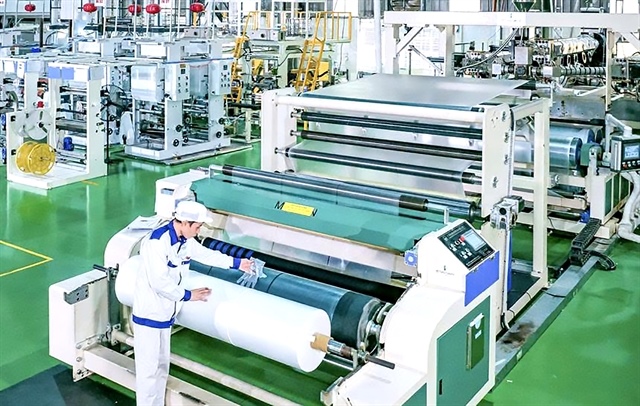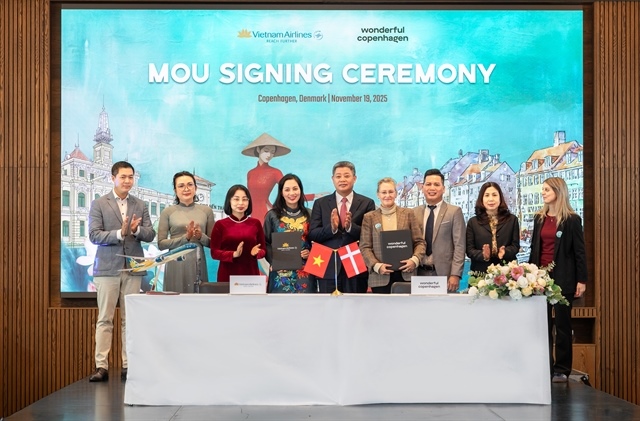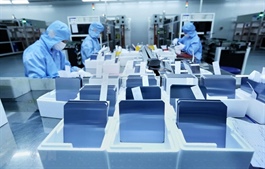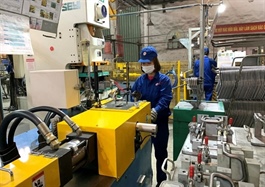Plastics industry strives for green growth
Plastics industry strives for green growth
In an era where sustainability is a global priority, Việt Nam’s plastics industry is actively transitioning through investments in recycling, bioplastics, and eco-friendly products, according to the Việt Nam Plastics Association.

A factory of Stavian Group. Vietnamese enterprises are actively investing in recycled plastics, bioplastics, and environmentally friendly product lines. Photo courtesy of the Việt Nam Plastics Association |
In an era where sustainability is a global priority, Việt Nam’s plastics industry is actively transitioning through investments in recycling, bioplastics, and eco-friendly products, according to the Việt Nam Plastics Association.
The association emphasised that sustainable and green growth is not only an inevitable trend but also the key to expanding export markets and enhancing the nation’s brand value.
When properly used, collected, and recycled, plastics are not an environmental burden but a valuable source of raw material for many industries.
Recycled plastics are now applied in fashion, construction, household goods, and even industrial components. Meanwhile, the development of bioplastics offers alternatives that reduce reliance on fossil resources and support emission-reduction goals.
Global brands such as Adidas, Nike, and Uniqlo already use recycled plastics to produce shoes, apparel, and accessories. In construction and technology, recycled plastics help reduce deforestation, save costs, and still meet safety and sustainability standards.
In Việt Nam, pioneering enterprises like Stavian, Duy Tân, and An Phát have invested heavily in recycling technologies, building collection systems, and gradually establishing a circular economy model in the plastics sector.
Đinh Đức Thắng, chairman of the Việt Nam Plastics Association, said: “The plastics industry in Việt Nam is entering a stage of great potential. With their low carbon footprint - much lower than traditional materials - plastics are playing an increasingly important role in the global economy.”
Sectors such as automotive, motorbikes, and aerospace are increasingly adopting plastic components for their light weight, which helps reduce greenhouse gas emissions, said Thắng, who is also chairman of the board and Chief Executive Officer of Stavian Group.
The association found that the rise of the global middle class and the boom in e-commerce also boosted consumption of household plastic products and packaging.
Rapid urbanisation, particularly in developing countries like Việt Nam, is driving strong demand for plastics in construction. At the same time, the rise of the global middle class and the boom in e-commerce are fueling the consumption of plastic household goods, packaging, and containers.
Coupled with the global supply chain shift, Việt Nam is becoming an important regional manufacturing hub, attracting major factories relocating or investing in new facilities. This trend continues to boost domestic plastics production and competitiveness.
Plastics should not be seen solely as a “problem” but rather as a sustainable solution when managed, used, and recycled responsibly.
With an increasingly robust production and trade foundation and a strong commitment to sustainability, the plastics industry is well-positioned to contribute to the country’s green growth goals.
“It is time to recognise plastics as a positive force in building a green and sustainable future. With collaboration between regulators, businesses, partners, and consumers - through designing recyclable products, optimising usage, source segregation, efficient collection, and material regeneration - plastics can undoubtedly become part of the solution in shaping a greener, more sustainable tomorrow,” Thắng said.
Over the past decade, Việt Nam's plastics industry has maintained steady growth, becoming one of the country’s key industrial sectors and contributing significantly to the national economy.
More than 4,000 enterprises currently operate in the industry, 90 per cent of which are small and medium-sized businesses that employ more than 250,000 workers, according to the association’s report.
Vietnamese plastic products have been exported to more than 190 countries and territories, with major markets including the US, Europe, Japan, and ASEAN.
In 2024, the plastics industry recorded revenue of around US$31.5 billion and export turnover amounted to US$10 billion, affirming its role as one of the nation’s core industries.
In the first seven months of this year, Việt Nam imported 5.55 million tonnes of plastic resins worth US$7.3 billion, up 18.8 per cent in volume and 11.6 per cent in value compared with the same period in 2024.
On the international market, Vietnamese plastic products continue to grow steadily in key destinations such as the US, Canada, Japan, Indonesia, and the EU. This reflects the strong transformation of domestic enterprises in improving quality, diversifying designs, and enhancing price competitiveness to better meet global consumer demand.
- 10:29 22/09/2025


























